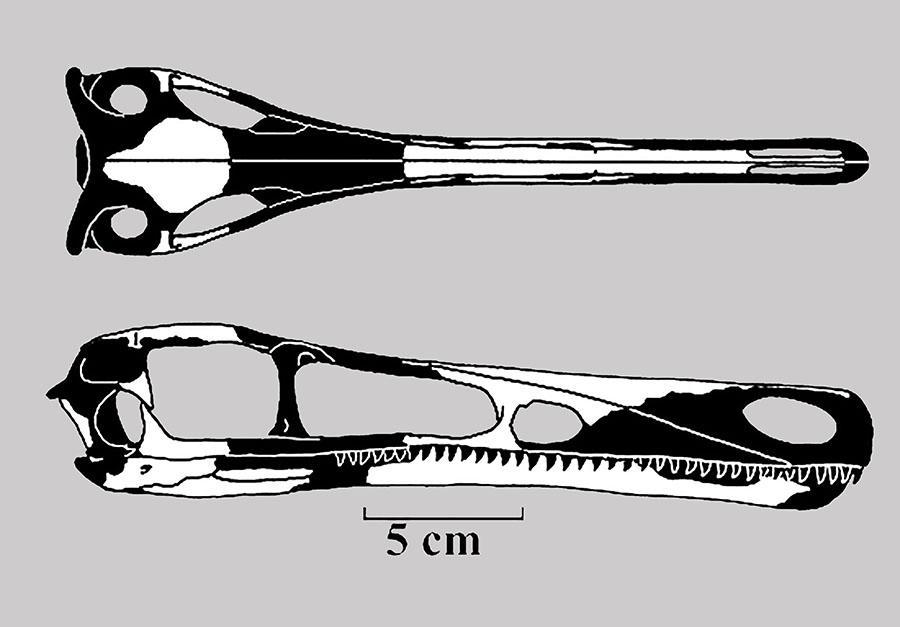Genus: Buitreraptor MAKOVICKY, APESTEGUIA & AGNOLIN, 2005
Etymology: From Buitrera, "vulture roost," the type locality and Latin, raptor “robber.”
Species: gonzalezorum MAKOVICKY, APESTEGUIA & AGNOLIN, 2005
Etymology: In honor of the brothers Fabian and Jorge Gonzalez, who discovered
the holotype, for thier dedicated paraticipation in "La Buitrera' fieldwork
over the years.
Holotype: MPCA 245
Locality: 'La Buitrera' facies, between the towns of Villa Dl Chocon and Cerro Policia, 80 km SW of ipolletti, and close to the southern coast of Lake Ezequiel Ramos Mexia, Rio Negro Province, Northwest Patagonia, Argentina.
Horizon: Candeleros Formation.
Biostratigraphy:
Age: Cenomanian Stage, Uppermiddle Gallic Subepoch, Lowermost Gulf Epoch, Late Early or Middle Cretaceous-Turonian Stage, Uppermost Gallic Subepoch, Lower Gulf Epoch, Early Late Cretaceous.
Material: Fragmentary skull and nearly complete skeleton.
Note: Has furcula.

Buitreraptor gonzalezorum (modified from TURNER, et al., 2012), Holotype: MPCA 245.
A) Furcula; B) Dorsal vertebrae; C) Caudal vertebrae; D) Ventral view of left scapulocoracoid; E) Fragmentary right ilium and pubis; F) Right humerus; G) Left femur; H) Right metatarsals.
Referred material:
MPCA 238: Three fused sacral vertebrae, the first two caudal vertebrae in articulation with the sacrum, and baring the first chevron in articulations between them, right ilium and pubis, right femur, right tibia with fused astragalus and calcaneum, metatarsals I-IV, possible pedal phalanx I-2 and phalanges II-1 and II-2, a cast of the ungual phalanx of the second digit made from a natural mold preserved in the rock.
GIANECHINI, MAKOVICKY, APESTEGUIA & CERDA, 2018
MPCA 471-A: Two isolated phalanges of the manus.
MPCA 471-B: Indeterminate fragment.
MPCA 471-C: Fragments of manual phalanges and posible metacarpals.
MPCA 471-D: Fragmentary metatarsus, including parts of the articulated matatarsals II, III and IV, and isolated pedal ungual phalanx and an unknown fragment.
MPCA 478: The distal portion of a right metatarsal II, along with its articulated pedal phalanges II-1, II-2 and II-3, possible distal articular portion of metatarsal III articulated with the proximal portion of the first phalanx, and a disal portionof a phalanx from digit IIi or IV articulated with th eporximal part of the following phalanx.
MPCN-PV-598: Cervial, dorsal, sacral and caudal vertebrae, partial pectoral and pelvic girdles, elements from the fore- and hindlimbs, including a nearly complete and articulated manus and pes.
VALAIS, APESTEGUIA, & GARRIDO, 2012
MPCA 470-13a-b: Right dentary.
Note: With tooth marks.